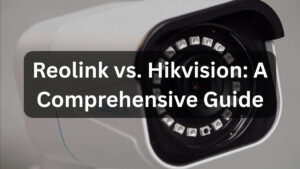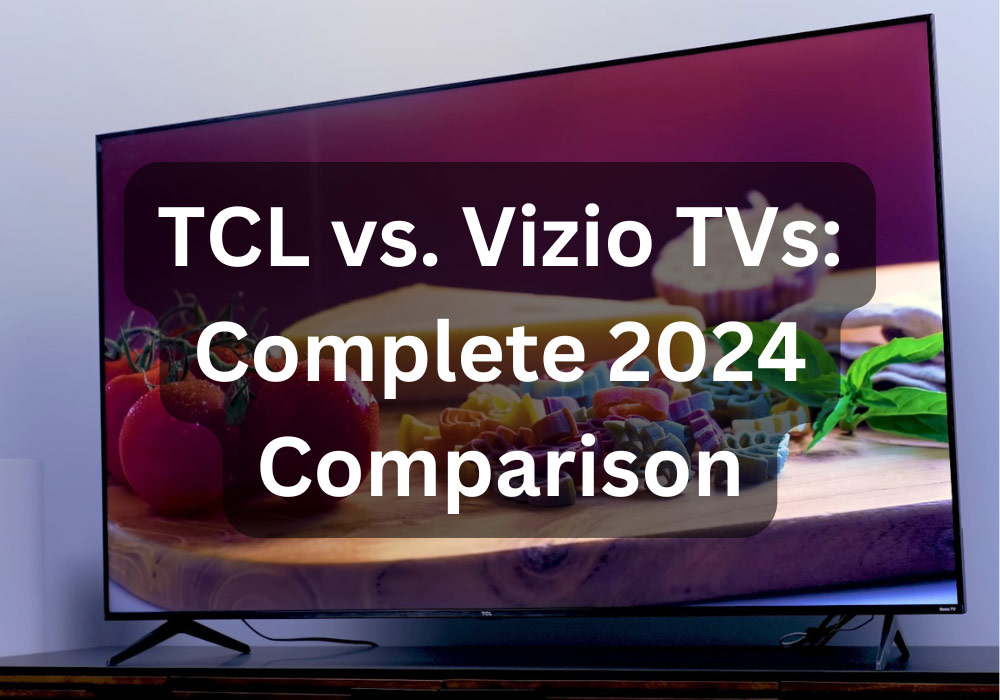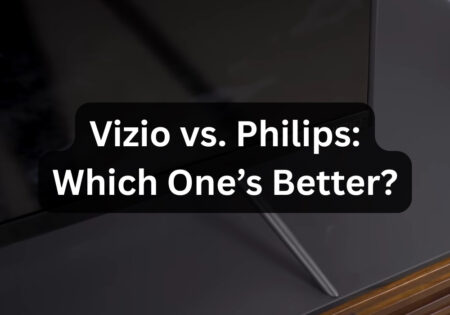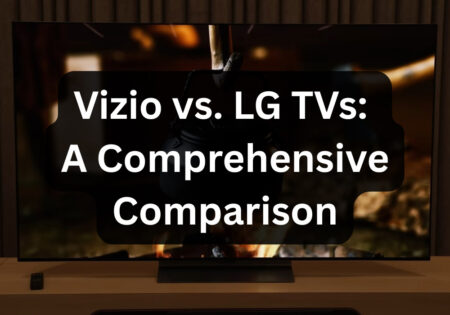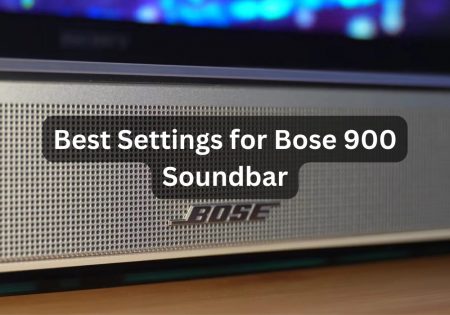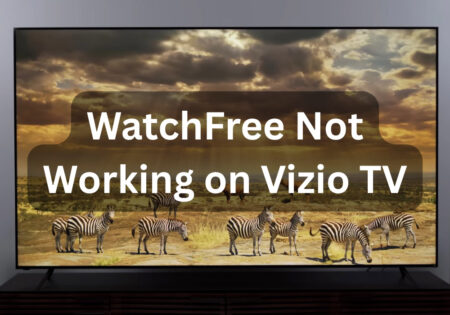Comparing TCL vs. Vizio can help a lot when deciding to buy a new TV, and I bet they’ve come up a lot during your search, as they’re both well-known brands offering great 4K picture quality and smart features. In this article, I’ll compare Vizio vs. TCL thoroughly, from picture quality and gaming performance to smart features and user experience, giving you every insight you need to choose the brand that suits your needs.
Which One Is Better, TCL or Vizio? (Quick Answer!)
To answer your question briefly, TCL excels in picture quality across all price ranges, offering superior brightness, color accuracy, contrast, and black levels compared to Vizio.
For gaming performance, TCL and Vizio are closely matched, with both brands providing valuable features like VRR, low input lag, and 120Hz refresh rates in their mid-range to premium models. There’s no clear winner here, as each performs well depending on specific gaming needs.
When it comes to smart features, TCL’s Google TV and Roku TV options outshine Vizio’s SmartCast platform, which can sometimes feel sluggish by comparison.
For more details, please see the table below and read the rest of this guide, which provides a comprehensive comparison of TCL and Vizio across different price categories.
| Category | Vizio | TCL | Winner |
|---|---|---|---|
| Picture Quality (Budget) | Quantum Dot Technology with 250-300 nits brightness, good for darker rooms; lacks local dimming | Quantum Dot (QLED) with better brightness for well-lit rooms; lacks local dimming | TCL |
| Picture Quality (Mid-Range) | Quantum Dot with ~900 nits brightness, Full-Array Local Dimming (40 zones); minor blooming in dark scenes | QLED with Mini-LED backlighting, ~1500 nits brightness, extensive dimming zones (1500); better contrast | TCL |
| Picture Quality (Premium) | Quantum Dot with ~900 nits brightness, Full-Array Local Dimming (144 zones); minor blooming | QLED with Mini-LED, up to 2500 nits brightness, 5000 dimming zones; exceptional black levels and contrast | TCL |
| Gaming Performance (Budget) | 60Hz refresh, VRR, and FreeSync; ~12ms input lag | 60Hz refresh, basic VRR, ~13ms input lag | Vizio (due to FreeSync) |
| Gaming Performance (Mid-Range) | 120Hz refresh, VRR, and FreeSync; ~9-10ms input lag | 120Hz refresh, VRR, FreeSync, and G-Sync; ~9-10ms input lag | TCL (G-Sync advantage) |
| Gaming Performance (Premium) | 120Hz refresh, VRR, and FreeSync; ~9ms input lag | 120Hz refresh, VRR, FreeSync, and G-Sync; ~9ms input lag | TCL (G-Sync advantage) |
| Sound Quality | Clearer dialogue and deeper bass in mid-range and premium models; eARC support | Basic sound, a bit flat; eARC support | Vizio |
| Smart Features (OS/UI) | SmartCast with Chromecast and AirPlay; Alexa and Google Assistant support; somewhat sluggish in budget models | Roku TV (responsive, vast app library) or Google TV (seamless Google integration); better UI responsiveness | TCL |
| App Availability | Major streaming apps; lacks Roku’s vastness but supports casting with Chromecast and AirPlay | Roku/Google TV provide comprehensive app library, frequent updates | TCL |
| Design & Build Quality | Sturdier build, especially in higher-end models; wider TV stands | Sleek design, but budget models feel less sturdy and plastic-heavy | Vizio |
| Customer Support & Warranty | One-year limited warranty, more positive support feedback | One-year limited warranty, mixed support feedback | Vizio |
Also Read:
Vizio vs Hisense
Brands Overview
When going on a hunt for best smart tv in the market, it’s important to get familiar with brands thoroughly. For starters, let’s get familiar with Vizio and TCL as a whole to understand their dynamics and how they work.
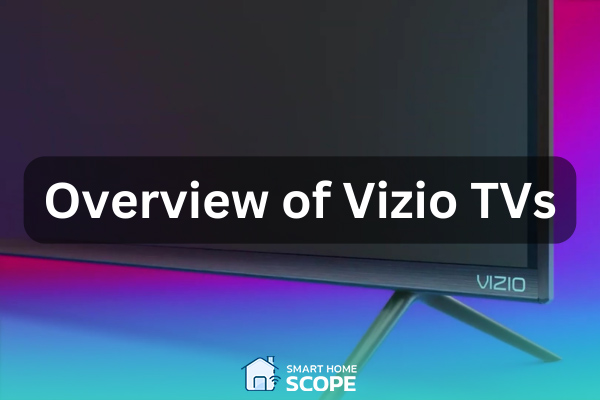
Overview of Vizio TVs
Vizio TVs are usually a great choice, especially if you’re a budget-conscious buyer who doesn’t want to sacrifice things like 4K resolution, HDR, and gaming features.
In their higher-end models, they use Quantum Dot Technology, which provides better color accuracy and brightness. Additionally, many of their TVs offer Variable Refresh Rate (VRR) and low input lag, which are essential for a smooth gaming experience.
It’s not all sunshine and rainbows with Vizio TVs. Their TVs come with the SmartCast platform that supports Google Chromecast and Apple AirPlay, which is a huge plus. However, this platform isn’t the smoothest or most user-friendly and can be a bit sluggish, especially on their lower-end models.
If you’re looking for more budget-friendly options, I suggest you read my Insignia vs Vizio guide as well. In addition, if you’re a big Vizio fan, you can check out my best Vizio smart TVs guide.
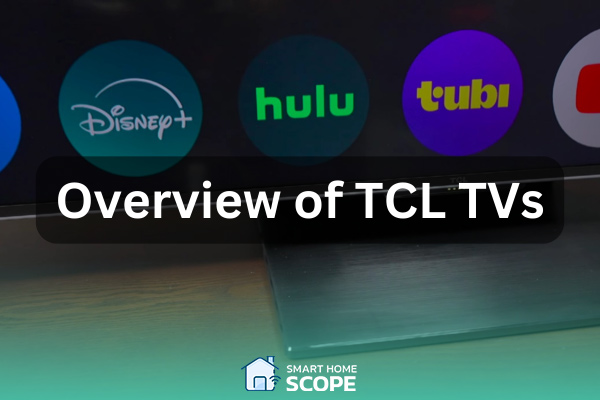
Overview of TCL TVs
Now, let’s switch gears and look into TCL TVs. Just like Vizio, they’re hard to ignore when looking for an affordable TV. TCL TVs mostly come with the Roku TV platform, which is easy to use, has a snappy interface, and offers tons of streaming options.
Google TV is the second platform that has found its way into TCL TVs in recent years, which is another slick and modern interface, perfectly compatible with Google Assistant for voice commands. Plus, having an Android TV that supports web browsers like Chrome is sometimes the one and only answer to every streaming need.
Moreover, TCL enhances its TVs with OLED technology to boost color and brightness, and some higher-end models, like the QM8 Series, offer Mini-LED backlighting, which can enhance contrast and black levels. They aren’t any less competitive than Vizio in terms of gaming performance, with the inclusion of VRR and low input lags for a smooth gaming experience.
Just like Vizio, not everything is perfect with TCL TVs. In my experience, TCL TVs feel a bit cheap when it comes to build quality.
This was just a brief comparison of TCL vs. Vizio; let’s dig deeper, and I’ll share more insights as we move forward.
Also Read:
Insignia vs TCL
TCL vs. Vizio: Picture Quality Comparison
To compare our brands’ picture quality, I’ll separate my comparison into three price classes: budget, mid-range, and premium. In each class, two top models from each brand will be compared.
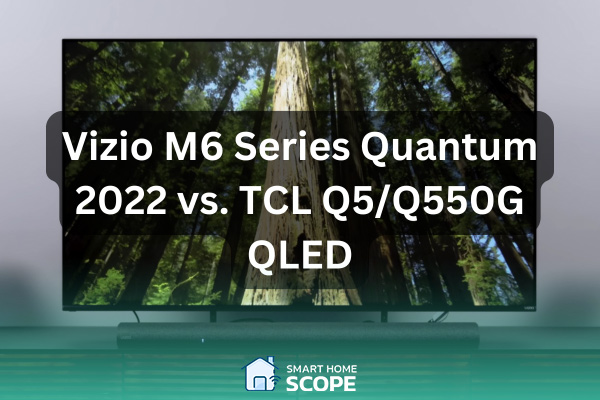
Vizio M6 Series Quantum 2022 vs. TCL Q5/Q550G QLED: Budget Picture Quality
These are two budget models with the highest value for money from our two brands. Let’s compare them.
Color and Brightness
When it comes to picture quality, color and brightness are two important factors to consider. The Vizio M6 Series is equipped with Quantum Dot Technology, which offers a wide color gamut and vibrant colors. However, its HDR brightness, with a peak brightness of 250-300 nits, makes this TV less suited for bright rooms.
On the other hand, the TCL Q5 also features QLED (Quantum Dot LED) technology. This TV shows superior color accuracy and brightness, making it a better choice for well-lit rooms and HDR content.
Contrast, Black Levels & Viewing Angles
Both models offer deep blacks, which is evident when watching movies with many dark scenes, like The Dark Knight Rises by Christopher Nolan. This is likely due to the VA panel used in both models. However, the lack of local dimming on the M6 and Q5 means blacks look a bit washed out in scenes with mixed lighting.
As is common with VA panels, the picture quality degrades as you change viewing angles, which affects both models.
Who Wins?
While the Vizio M6 holds its own with solid contrast and deep blacks, it falls behind the TCL Q5 in brightness and color reproduction. Therefore, the winner in this price range is TCL, especially in rooms with bright lighting. If you dislike when you can’t fully see the picture on a sunny day, TCL is a better choice.

Vizio Quantum Pro QLED vs. TCL QM7/QM751G QLED: Mid-range Picture Quality
In the mid-range price class, the Vizio Quantum Pro QLED and TCL QM7 are top contenders. Let’s see how these models stack up.
Color & Brightness
Just like the budget series, this Vizio TV integrates Quantum Dot Technology, but with a peak brightness of about 900 nits, which significantly enhances color vibrancy in HDR scenes. However, it still lacks the intensity of more expensive models for handling HDR content.
On the other hand, there’s the TCL QM7, which outpaces Vizio. Why? Well, with QLED technology and Mini-LED backlighting, the TV can achieve over 1500 nits in peak brightness, providing an impressive performance with vivid colors.
Contrast & Black Levels
When it comes to contrast, Vizio steps up its game with Full-Array Local Dimming (FALD) featuring around 40 dimming zones. This feature noticeably enhances the TV’s performance in delivering deeper blacks and better contrast. However, there’s minor blooming around bright objects on dark backgrounds.
On the other hand, the QM7, thanks to Mini-LED backlighting with up to 1500 dimming zones, offers better black levels and contrast. Even in challenging dark scenes with bright highlights, the contrast is impressive.
Viewing Angles
Similar to the budget models, both brands use VA panels, which don’t look great for side-angle viewing.
Who Wins?
Once again, Vizio falls behind TCL. TCL offers superior brightness, contrast, and color accuracy. With the Mini-LED backlighting and extensive dimming zones, its picture quality is more satisfying than that of Vizio.
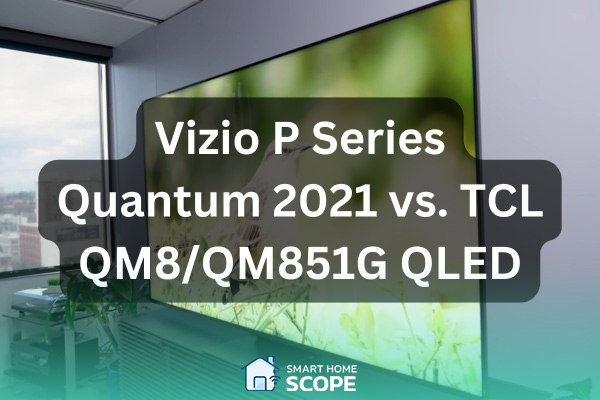
Vizio P Series Quantum 2021 vs. TCL QM8/QM851G QLED: Premium Picture Quality
It’s time to compare Vizio vs. TCL to see which brand beats the other in picture quality when looking at their best TVs.
Color & Brightness
Similar to the mid-range Vizio, the P Series also offers 900 nits in peak brightness, which, as I mentioned earlier, is very capable of delivering vibrant HDR highlights in scenes with bright sunlight or reflections.
Looking at our TCL contender, it significantly steps up its game, reaching a remarkable brightness of up to 2500 nits, making it a smart choice for well-lit rooms and HDR content. I was amazed by this TV’s ability to deliver vibrant and lifelike colors.
Contrast & Black Levels
Similar to the mid-range Vizio TV, this model uses Full-Array Local Dimming with 144 dimming zones to deliver deep blacks and detailed contrast in dark scenes. However, signs of blooming are visible around bright objects in dark backgrounds.
The TCL QM8 definitely beats Vizio here. With its Mini-LED backlighting, this TV offers up to 5000 dimming zones, giving nearly perfect blacks with minimal blooming, even in high-contrast scenes. This level of precision in black levels and contrast is unmatched in its class.
Viewing Angles
Again, with VA panels in use, neither TV provides perfect picture quality from every angle and there are limitations when viewing from the sides.
Who Wins?
The winner is obvious; TCL’s superior brightness, contrast, and black levels leave us speechless. If you’re looking to buy a premium TV and you’re stuck between TCL and Vizio, go with the TCL QM8.
In the TCL vs. Vizio matchup, TCL emerges with remarkable luminosity, vibrant hues, refined contrast, and profound black levels across every price tier
TCL vs. Vizio: Gaming Performance Comparison
To see which brand excels in gaming performance, it’s important to look at features like refresh rate, input lag, and Variable Refresh Rate (VRR). Let’s see how TCL and Vizio stack up.
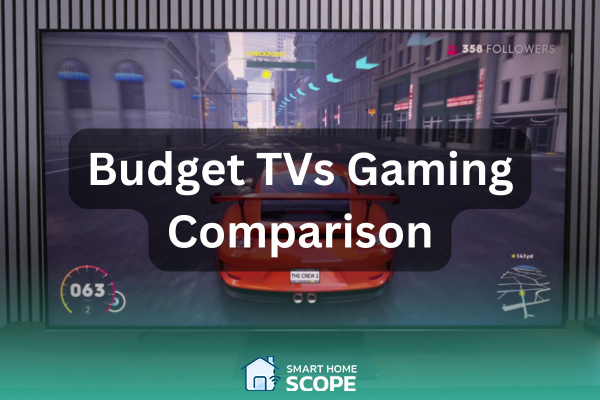
Vizio M6 Series Quantum 2022 vs. TCL Q5/Q550G QLED: Budget Gaming Performance
Refresh Rate & VRR
The Vizio M6 has a 60Hz refresh rate, which is typical for a budget TV. It’s not bad for casual gamers, but more serious gamers might find it lacking. While the refresh rate isn’t surprising, the fact that this TV supports VRR is good news, as it reduces screen tearing and stuttering.
Additionally, the Vizio M6 supports FreeSync, making it a good choice for PC gamers with AMD graphics since it provides smoother gameplay at lower refresh rates.
On the other hand, the TCL Q5 also features a 60Hz refresh rate. It includes basic VRR support, but lacks FreeSync or G-Sync, meaning PC gamers won’t get the advanced VRR support they might want. However, for console gamers, the basic VRR still provides a smooth experience.
Input Lag
Neither model disappoints when it comes to input lag. The Vizio M6 achieves around 12ms in Game Mode, meaning the on-screen actions closely match button presses.
TCL keeps input lag at around 13ms in Game Mode, just a tiny bit higher than Vizio’s. In practice, though, the difference is barely noticeable.
Who Wins?
Both Vizio and TCL offer the same refresh rate and similar input lag, but the Vizio M6 edges out TCL because of its FreeSync support, making it a smarter choice for PC gamers with AMD cards.
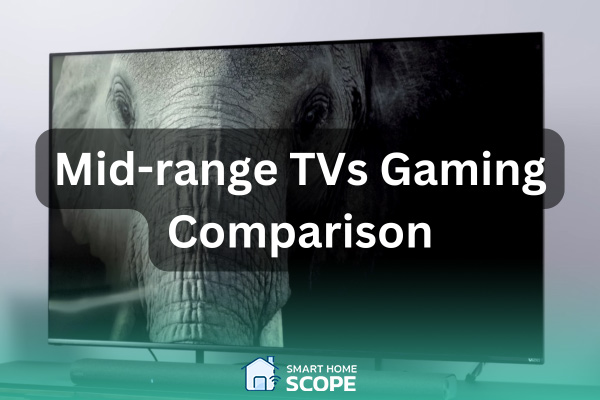
Vizio Quantum Pro QLED vs. TCL QM7/QM751G QLED: Mid-range Gaming Performance
Refresh Rate & VRR
Both models offer a 120Hz refresh rate at 4K resolution, enough to achieve smooth gameplay. The Vizio Quantum Pro includes VRR and FreeSync, similar to the budget model.
TCL, however, steps up here with VRR, FreeSync, and G-Sync support. TCL’s G-Sync support means PC gamers with NVIDIA GPUs can also enjoy smoother gameplay.
Also Read:
Vizio vs. Samsung
Input Lag
Input lag refers to the delay between pressing a button and seeing the action on-screen. The Vizio Quantum Pro offers 10ms at 4K/60Hz and 9ms at 4K/120Hz, providing a very responsive gaming experience.
The TCL QM7 doesn’t lose the race either, with 10ms at 4K/60Hz and 9ms at 4K/120Hz, so you’ll get smooth gameplay here as well.
Who Wins?
Our two brands are highly competitive in this price class. I would declare it a tie, but since TCL offers G-Sync technology, which benefits those playing on a PC with NVIDIA GPUs, TCL has a slight edge here.
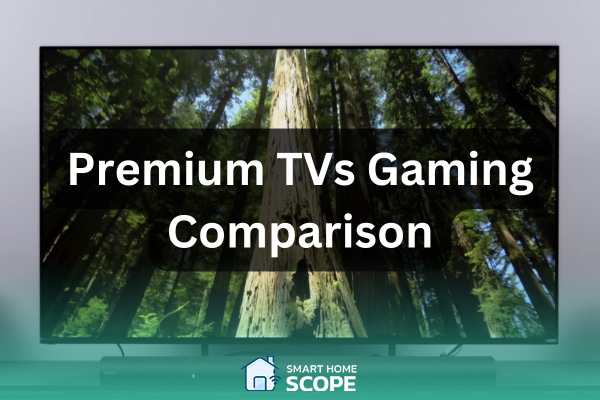
Vizio P Series Quantum 2021 vs. TCL QM8/QM851G QLED: Premium Gaming Performance
Refresh Rate & VRR
Vizio and TCL offer the same features as their mid-range models in terms of refresh rate and VRR support. The Vizio P Series offers a 120Hz refresh rate at 4K resolution, along with VRR and FreeSync support.
The TCL QM8 similarly offers 4K/120Hz, along with VRR, FreeSync, and G-Sync support, meaning gaming on any device—console, AMD PC, or NVIDIA PC—would be smooth and satisfying.
Input Lag
In terms of input lag, the Vizio P Series and TCL QM8 maintain their ultra-low input lag around 9ms at 4K/120Hz. Such low input lag means both can handle fast-paced games easily.
Who Wins?
In this price class, TCL leads with its G-Sync support, making it an ideal choice for NVIDIA GPU users. However, if you don’t plan to play on a PC, or if you’re more focused on next-gen consoles, this may not matter to you.
In gaming performance, TCL and Vizio are neck-and-neck, each delivering VRR, low input lag, and 120Hz refresh rates in their mid to premium models, leaving no definitive victor.
TCL vs. Vizio: Sound Quality
As I’ve always mentioned, don’t expect anything special from TV speakers. Vizio and TCL, following the same rule, didn’t surprise me with their sound quality. However, I got deeper bass and clearer dialogue in Vizio’s mid-range and premium models, while TCL’s sound quality was more basic and seemed a bit flat.
On the bright side, both brands include eARC support in their TVs, which makes it easier to connect them to soundbars or external audio systems with high-quality audio formats like Dolby Atmos.
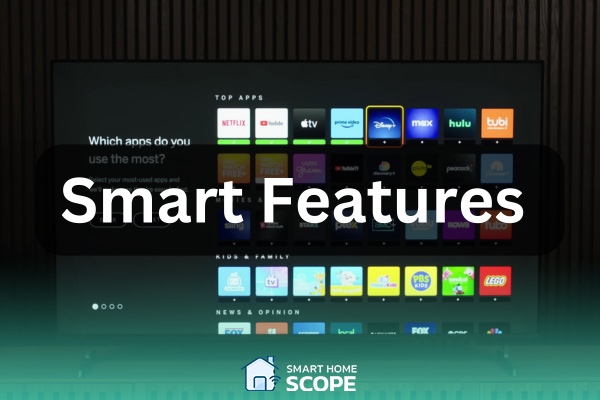
TCL vs. Vizio: Smart Features
Operating System and User Interface
Vizio offers its own SmartCast platform across all its models. SmartCast, while easy to use and navigate, can appear somewhat sluggish sometimes, especially on Vizio’s budget TVs. However, one thing I like about the SmartCast platform is that it supports Apple AirPlay and Chromecast, which is an excellent benefit for streaming content from mobile phones and computers to your TV.
Additionally, SmartCast offers seamless compatibility with Alexa and Google Assistant, making it responsive to voice commands, which is a valuable feature, especially for those invested in Alexa or Google for their smart home platform.
On the other hand, TCL offers either Roku TV or Google TV on its TVs. Roku is a very popular platform, as it offers a responsive, easy-to-use platform that’s hard to beat. In addition, Roku offers a vast library of apps that can satisfy any streaming needs.
Google TV is mostly used in TCL’s higher-end models. What I like about Google TV is that it integrates seamlessly with Google services. So, if you’re already invested in the Google ecosystem, this is a huge advantage, as it offers built-in Google Assistant voice control and a more refined search function.
App Availability
As I mentioned, TCL offers Roku TV and Google TV, and with Roku, you get access to an enormous app library that includes all major streaming platforms like Netflix, Hulu, Disney+, and Amazon Prime Video, along with some niche services. Roku also updates its system frequently, keeping it fresh over time.
On the flip side, Vizio’s SmartCast, while offering the major streaming apps, lacks the vastness of the Roku platform. However, its support for Chromecast and Apple AirPlay 2 is an advantage, making it possible to cast apps that aren’t natively supported.
Who Wins?
While Vizio’s SmartCast has the advantage of Chromecast and AirPlay, it still falls behind Roku TV and Google TV when it comes to user interface. So, TCL is the winner here.
Design & Build Quality Comparison
In terms of design, both Vizio and TCL follow similar trends with sleek, minimalistic looks.
For me, Vizio TVs generally offer a sturdier and more solid build, which is pretty evident in their higher-end series like the Vizio P-Series Quantum that we discussed earlier. However, Vizio TV stands are usually quite wide, so you’ll need a large TV stand or may prefer wall mounting.
As I said, TCL and Vizio follow the same rule in terms of aesthetics, but TCL’s budget TVs feel more plastic-heavy to me compared to Vizio.
Customer Support and Warranty
Both brands provide a one-year limited warranty on their TVs, covering manufacturer defects but not accidental damage or issues caused by improper usage. While both brands have large communities, Vizio support has generally received more positive feedback over the years, while mixed reviews are more common with TCL customer support.
Conclusion
This was my complete TCL vs. Vizio comparison guide. I tried to provide you with the most comprehensive guidance you can find across the web, and I’m confident that you’ll be able to decide between these two very easily now. The verdict is that TCL provides better picture quality and smart features, while Vizio offers better build quality and customer support. Gaming performance is a tie. The final decision to go with Vizio or TCL depends on your specific needs.
